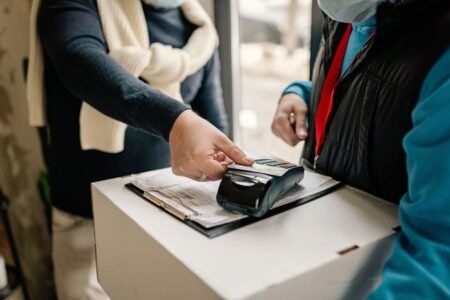70% of websites investigated for mis-selling ringtones, wallpapers and other mobile phone services have been corrected or closed, following an 18 month EU consumer crackdown carried out by 27 Member States, Norway and Iceland. Since June 2008, when initial checks took place, 301 websites were investigated by national enforcement authorities for serious breaches of EU consumer law. 70% of the 301 cases investigated, have now been resolved. 52% (159 websites) have been corrected and 17% (54 websites) have closed. The three main problems found were: unclear pricing (for example, information was missing or incomplete); failure to provide complete trader information; and misleading advertising, in particular, advertising ringtones as “free” where the consumer is in fact tied into a paying subscription. In Italy, in February and May enforcement authorities, as a result of the sweep, imposed large fines of around 2 million Euro on 9 major companies found to be in breach of the law.
Advertisement
1. THE MOBILE SERVICES SWEEP
What are mobile services?
Mobile phones have become an extremely popular means of communication and a sector which continues to grow. Linked to this is a growing market for mobile services i.e. ring-tones, wallpapers for mobile phones, subscriptions to chat services, phone games, logos, etc. These mobile services are widely advertised and sold on the Internet, as well as through print media or on TV.
Why did you pick mobile phone content services for this second sweep action?
The mobile phone service sector was chosen by the Commission and national enforcement authorities for this Sweep due to the growing number of complaints received by Member States about providers in this sector. Many of the complaints referred to misleading practices which targeted children and young people in particular. To give just two examples:
* A consumer ordered a free screensaver from a trader in November 2007. He started getting text messages but could not open them. He has been debited altogether 76.00 for these messages that he has never ordered. It has taken him considerable effort to find out where the messages came from.
The service provider denies responsibility but the consumer has had to pay the fees to the mobile operator so that his regular mobile phone service would not be blocked.
* A consumer’s 9 year old daughter – by mistake – ordered a free ring tone. It has turned out that the free ring tone has led to some sort of a subscription- not free at all. The consumer found this unacceptable and requests a refund. Complaints have been made to both mobile phone operator and the ring tone seller. The mobile phone operator has agreed to refund the cost messages received, in total 124,76. All other expenses, which the consumer sought to recover from the ring tone vendor in total 272,71 were retained. It is worth noting the mobile phone operator’s billing has been delayed throughout the whole autumn which is why the consumer was not even aware of these messages.
When did this Sweep take place and what did it involve?
In the first phase of the exercise, officials in enforcement authorities across Europe examined mobile services websites during the week of 2 6 June 2008. In total, they checked over 500 websites to see if they were in compliance with the relevant EU legislation, or whether there were for instance signs of misleading practices. Among the practices which were addressed in this sweep were:
* Services advertised as “free” when they were not free. Some services had costs which the consumer would only discover after the transaction. Some tied the consumer to a long-term contract without clearly indicating how the consent to such a contract was given or how it could be terminated;
* Prices and related charges not indicated in a clear way (until invoiced via the phone bill);
* Unclear disclosure of important information for the consumer: hiding key contractual or product information, or presenting it in an unintelligible, ambiguous, or untimely way;
* Targeting children and young people in advertising services: Children and young people are particularly vulnerable consumers, prone to certain commercial practices due to their age or credulity and unable to recognise misleading or false marketing as quickly as an adult would.
How did the authorities choose which sites to check?
The sites in question were targeted either by using general lists of sites with mobile services content or by collecting information from organisations (consumer NGOs, ombudsmen, organisations defending the interests of children and young people etc) which had received complaints about specific sites.
What happened next, as a follow up to the initial findings?
The Sweep investigation phase was followed by appropriate enforcement actions. This is the Enforcement Phase. Following on from the findings of the initial investigation, national enforcement authorities followed up by contacting the traders responsible for the incompliant websites, telling them to correct the irregularities or face legal sanctions. Flagged sites were scrutinised closely to determine those sites that required action. This enforcement phase of the exercise included, for cases identified as having a cross border element, applying the cooperation mechanisms of the CPC Regulation, namely requesting investigative and enforcement assistance from other Member States’ enforcement Authorities. Cases when the business, consumer and enforcer authority were all situated in the same country were followed by the national authority.
Today’s press release and Q&A provide feedback on these enforcement actions during the enforcement phase since summer 2008.
What are the EU consumer rules that companies need to comply with?
Under EU rules, companies must ensure that consumers who purchase telecom services on-line:
* can see who the trader is and how to contact him
* can clearly see what the total price is
* are not misled if a product is advertised as “free”, it must be free with no hidden charges or subscription conditions
* should understand clearly what they are purchasing, whether it is a subscription or not and what the terms and conditions are.
The following EU Directives provided the legal basis for the sweep:
* Unfair Commercial Practices Directive (UCP) 2005/29/EC. The UCP Directive provides that traders must display all the information that consumers need to make an informed choice in a clear and intelligible way. It also bans deceptive or misleading advertising or marketing, and aggressive sales techniques. Certain groups that may be particularly vulnerable to unfair commercial practices due to age/credulity (e.g. children) are also protected under the UCP Directive.
* Distance selling Directive 1997/7/EC. This Directive defines some of the minimum information requirements which online traders must provide, including the identity of supplier, main characteristics of goods, complete price (including taxes), period of subscription, duration of the contract etc.
* eCommerce Directive 2000/31/EC. This Directive provides for additional information requirements concerning the details of the service provider, including his e-mail address.
2. THE RESULTS
Of the 554 sites investigated, during the enforcement phase 301 were found to be in breach of EU consumer rules. 70% of problems have now been resolved, 159 have been corrected (52%), and 54 have closed (17%)
The following results are based on available reports from 27 participating Member States plus Norway and Iceland.
Table 1: Summary
Total number of websites checked | Total number of websites that were initially flagged for further investigation | Total number of sites confirmed as in breach of consumer rules | Total number of sites where the problems are resolved (corrected + closed) | Total number of CPC (cross border) cases |
554 | 466 | 301 | 213 | 58 |
Table 2: Results per Country
Country | Total number of the websites checked | Total number of the websites initially flagged for further investigation | Total N° of sites found in breach of consumer rules | Total N° of sites resolved | Total number of CPC cases |
Belgium | 28 | 27 | 18 | 15 | 3 |
Bulgaria | 22 | 21 | 14 | 12 | 0 |
Czech Republic | 43 | 30 | 14 | 8 | 0 |
Denmark | 15 | 15 | 11 | 8 | 1 |
Germany | 30 | 20 | 13 | 13 | 4 |
Estonia | 15 | 13 | 12 | 8 | 1 |
Ireland | 18 | 17 | 0 | 0 | 0 |
Greece | 8 | 7 | 6 | 4 | 0 |
Spain | 25 | 25 | 10 | 3 | 4 |
France | 27 | 20 | 20 | 16 | 0 |
Italy | 7 | 5 | 3 | 3 | 1 |
Cyprus | 5 | 5 | 5 | 5 | 0 |
Latvia | 14 | 14 | 14 | 10 | 3 |
Lithuania | 20 | 20 | 20 | 17 | 0 |
Luxembourg | 9 | 2 | 2 | 1 | 2 |
Hungary | 23 | 23 | 21 | 13 | 3 |
Malta | 2 | 2 | 1 | 0 | 0 |
Netherlands | 35 | 20 | 16 | 12 | 1 |
Austria | 29 | 27 | 21 | 5 | 16 |
Poland | 11 | 8 | 8 | 8 | 1 |
Portugal | 9 | 9 | 0 | 0 | 0 |
Romania | 40 | 38 | 21 | 16 | 4 |
Slovenia | 11 | 10 | 8 | 8 | 0 |
Slovakia | 15 | 0 | 0 | 0 | 0 |
Finland | 15 | 15 | 6 | 3 | 0 |
Sweden | 5 | 5 | 1 | 0 | 0 |
United Kingdom | 43 | 39 | 12 | 10 | 0 |
Iceland | 8 | 7 | 7 | 7 | 0 |
Norway | 26 | 22 | 17 | 8 | 14 |
Particular attention was paid to sites targeting children and young people
As ringtones and wallpapers are particularly popular with children and young people, authorities paid particular attention to actively searching for and verifying sites targeting (partially or exclusively) children and young people. Authorities had evidence that websites sometimes target children taking advantage of their lack of consumer experience and credulity. Typical criteria used to identify these sites were cartoons, popular characters from TV shows or the explicit indication on the site that parental content was required. The sweep’s first results reveal a rate of irregularities (80%) comparable to that of sites oriented towards adults.
Table 3: Websites targeting children and young people
Total number of websites checked targeting children and young people | Total number of websites that needed further investigation | Total number confirmed in breach | Total number of CPC (cross border) cases |
279 | 237 | 163 | 54 |
Criteria* used to identify sites targeting children and young people | Out of the 279 sites targeting children and young people |
– Images from cartoons were used – Imges from TV shows for children were used – Request for parental consent was required | 61% 23% 18% |
* In some websites more than one criterion applied.
What were the main problems found?
The most common problems identified in this first phase of the sweep concerned: misleading price information so that the real costs were unclear or customers might be unaware that they were signing up to a subscription; the use of the word “free” to lure consumers into long-term contracts; missing information about the trader and/or missing information about terms of payment, means of delivery or on complaint handling.
Table 4: Main problems found*
Type of problem | Examples of problem | Total number of websites in which these problems were confirmed | Of which targeting children and young people |
Missing or incomplete price information | -the website does not indicate the price including all taxes; – In case of subscriptions, the word ‘subscription’ is not clearly mentioned – the period of subscription is not clearly mentioned; – Where appropriate, the website does not indicate all additional delivery costs; | 124 (41% or 301 websites) | 76 |
Missing or incomplete information about the trader: | – Trader’s name not indicated; – Geographic address of the trader is not provided; – Missing contact details of the trader; | 225 (75% of 301 websites) | 124 |
Misleading presentation of information | – Misleading use of the word ‘free’; – use of small prints to give key information on the terms of the contract; – information on the contract is available on the site but difficult to find | 105 (35% of 301 websites) | 56 |
* Some websites contained more than one of the above problems
What conclusions could you draw?
This kind of ‘Sweep’ investigation is becoming increasingly effective and is now yielding results in the enforcement of EU consumer rules. Authorities are working together to produce a greater impact and they are also targeting problematic areas of the market for consumers with more precision. Furthermore, the increased media attention is serving to deter bad business practice. But enforcement work alone can not be expected to reach and resolve all of the problems. Here the role of the consumer is critical in terms of awareness and prevention. Parents can educate their children and warn them of the danger that they may face on the internet whether they buy mobile content services or engage in other commercial activities.
Is enforcement finished? How long does enforcement take?
The length of time needed for enforcement varies. Some companies are ready to correct mistakes after the first contact by enforcers while others tend to use all the available tools (including legal ones) to postpone the necessary changes. The length of the enforcement phase depends on how complicated the individual cases are or whether they require international coordination. Those involving several sites in different countries may even last longer than a year. With regard to this investigation, 17% of the cases are ongoing and it is expected that the follow up will be concluded in the course of 2010.
Is the high number of websites found in breach of legislation an indication of the failure of Member States’ enforcement?
On the contrary, Member States did a very good job. When preparing a Sweep exercise, Member States pre-select a list of websites that have high probability to be in breach of EU consumer legislation. When enforcers screen the websites during the 1st phase of the Sweep, websites are flagged for further investigation and if the breach is confirmed, the Member States fix the problems. This is therefore the result of good enforcement work.
Did enforcers encounter the problem of sites closing down or disappearing? Did any re-open under another name, or did any ignore the enforcement demands?
It is the job of the enforcers to check the market and correct mistakes. They are free to use all the powers in their possession to cease infringements. Companies can not just ignore the instructions of the authorities. During the enforcement phase about 17% of the websites disappeared but the operators were not found to have re-opened their sites elsewhere; action of this kind will not however, be handled in the framework of the present Sweep. Nevertheless, subsequent enforcement actions may identify such new sites and authorities may check these sites repeatedly.
Were enforcement authorities able to contact websites that did not have contact details (which is one of the problems identified with many of these websites)?
Authorities have the necessary powers and tools to establish the identity of operators either those owning the site or at least those operating the server on which it is based. If the identity of the (legal or private) person operating a problematic web-site cannot be established and therefore enforcers cannot contact it, the authorities may request the web server operator to shut it down. In two cases enforcement authorities have reported that they were unable to contact the trader and in eleven cases the trader was found to be located in a 3rd Country (US, Switzerland, Israel, United Arab Emirates and China). Participating authorities have indicated that they have in some cases contacted the trader but no compulsory follow up is possible in the framework of the CPC Regulation.
The Commission is currently negotiating an agreement on consumer protection cooperation with the United States of America on behalf of the European Union
Were the same websites checked by different Member States?
As for the previous Sweep, authorities searched for sites targeting consumers in their country. For companies operating different sites for different countries, authorities checked the one concerning their own consumers Sometimes a site operates in a language which is in use in more than one country. Such sites might have been checked by more than one authority. However, it did not happen too frequently and authorities will coordinate their work through the Enforcement Network.
3. BACKGROUND
What is a Sweep?
An “EU Sweep” is a joint EU investigation and enforcement action to check for compliance with consumer protection laws. It involves carrying out a targeted and coordinated check on a particular sector with a view to seeing where consumer rights are being compromised or denied. Member State enforcement authorities then follow up on these findings, contacting the incompliant companies and demanding that they come into line with the relevant requirements. Legal action can be taken against operators who violate EU consumer law.
The first EU Sweep on Airline ticket selling websites was conducted in 2007. It brought together 15 Member States plus Norway in a first joint action between enforcement authorities across Europe (see IP/08/722).
This second EU Sweep was on mobile phone content services such as ring-tones, and wallpapers). It was carried out between 2-6 June 2008, by enforcement authorities in all 27 Member States as well as Norway and Iceland, and it was coordinated by the European Commission.
How does a “Sweep” work in practice?
There are two phases:
1. The first phase is the co-ordinated sweep action: Participating Member States systematically check for practices on different websites which breach consumer protection law. For instance, it is against consumer protection rules to advertise a product for free and afterwards tying the consumer to a long term subscription. It is also against consumer protection rules to advertise a product for free and still require a one-off payment. It is further against consumer protection rules not to provide the name of the trader and main characteristics of the product.
2. The second phase is the enforcement action: During this phase, authorities will further investigate websites flagged as “having irregularities” during the sweep and take appropriate follow up actions to ensure that non compliant sites are corrected and/or closed. National authorities will investigate and take enforcement actions for national cases. When it is a cross -border case (e.g. where the trader operates from another country), enforcement authorities will request assistance from colleagues in other countries’ authorities. This is done via the Consumer Protection Co-operation Network of national enforcement authorities from 27 Member States and Norway & Iceland. During this enforcement phase the companies have a right of reply and an opportunity to correct practices which are illegal.
Those who fail to do so could face legal action leading to fines or closure of their Web sites. Such sweep action tells us if EU consumer protection laws are doing what they were designed to do. This kind of tool also enables us to test the effectiveness of our enforcement action.
What sanctions can be taken?
EU consumer laws are enforced and sanctions and penalties are therefore set at national level. Possible measures can include a request to a company demanding to change or cease a prevailing practice, imposing and collecting fines, or as a last resort, may ultimately lead to the closing down of the web-sites. Enforcement authorities are obliged to take measures (repeatedly if need be) until the infringement has ceased.
Which Member States participated in the mobile services Sweep?
27 Member States plus Norway and Iceland participated in this second Sweep. The full list of participating authorities, and their press contacts, can be found below.
Why does a Sweep require EU co-operation?
Online selling often concerns operators located in countries different from the consumers’ country.
In case of deceptive online selling practices, tackling these rogue traders can be done more effectively if there is EU wide co-operation. For example, a website selling to one Member State, e.g. France may well be based in Belgium, and to challenge the illegal practice, France needs to request the co-operation of the Belgian authorities.
Source: European Commission







